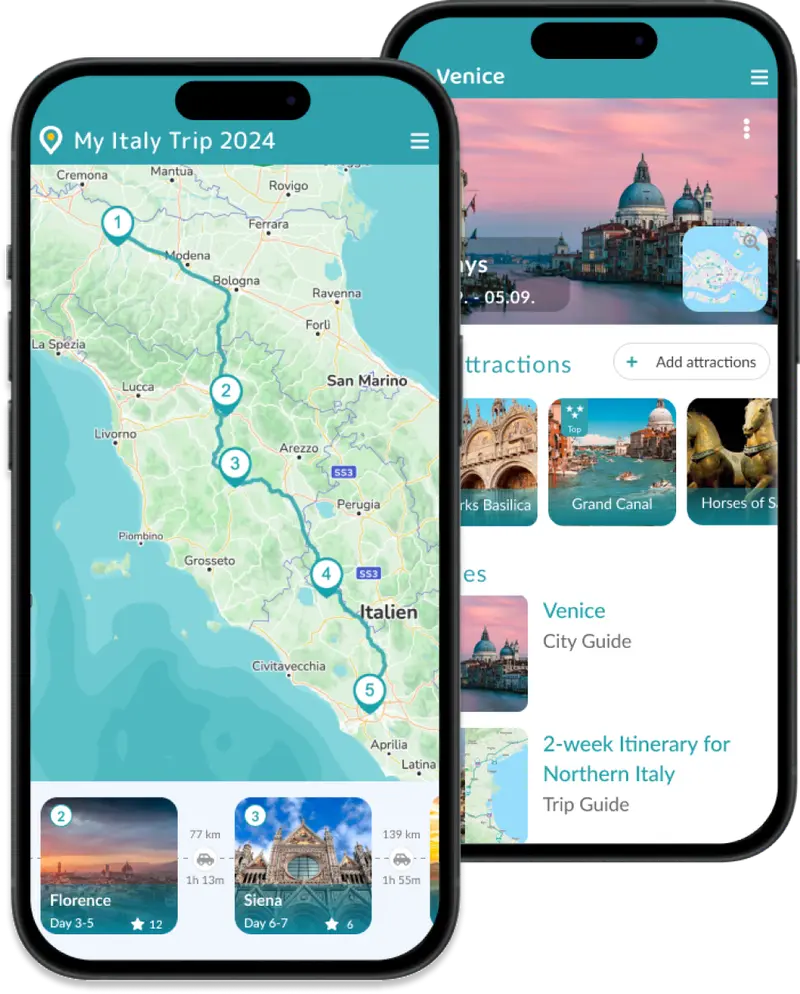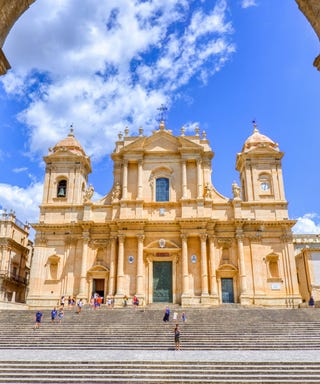Ancient Syracuse, is one of our favourites in Sicily. Once among the most powerful cities of the ancient world, Syracuse enchants with its Greek ruins, Baroque architecture, and the charming old town on the island of Ortygia. Explore bustling street markets, visit the beautiful in the heart of , and wander through the picturesque streets of its old Jewish Quarter. Syracuse, with its fascinating attractions, offers you a rich cultural history. From the to the , there is much to explore.
Top Highlights of Syracuse

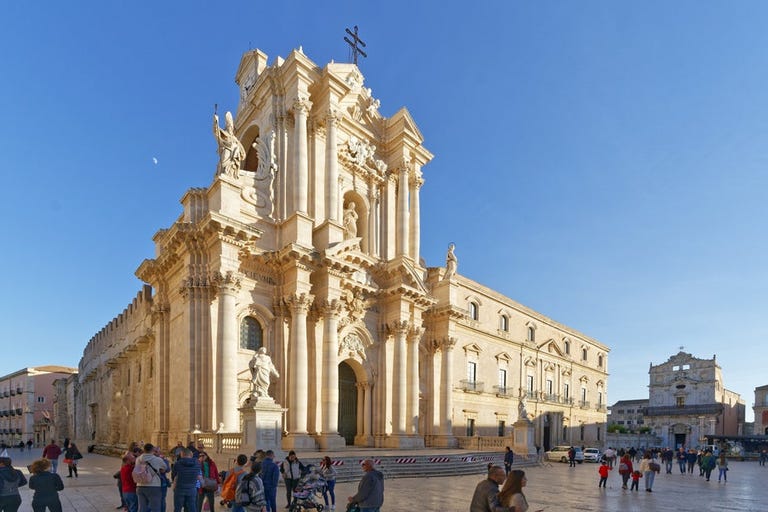
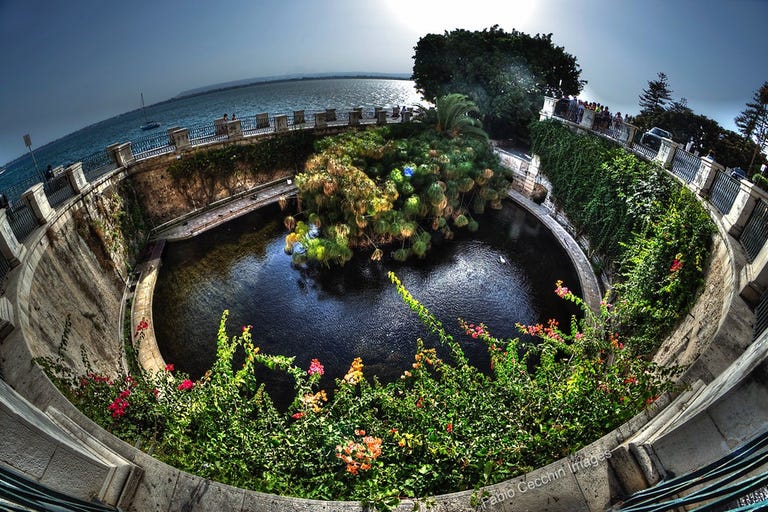
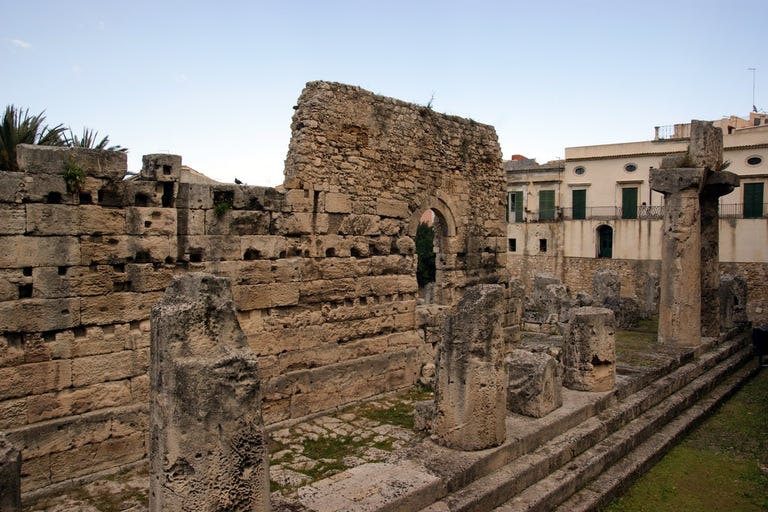

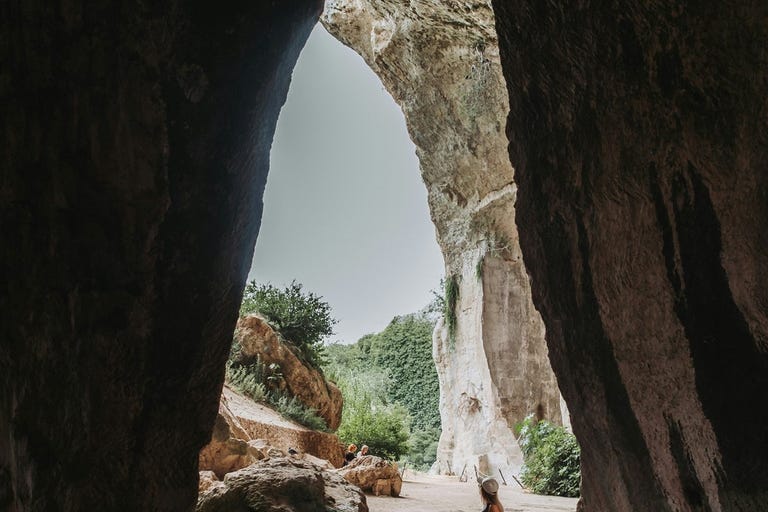
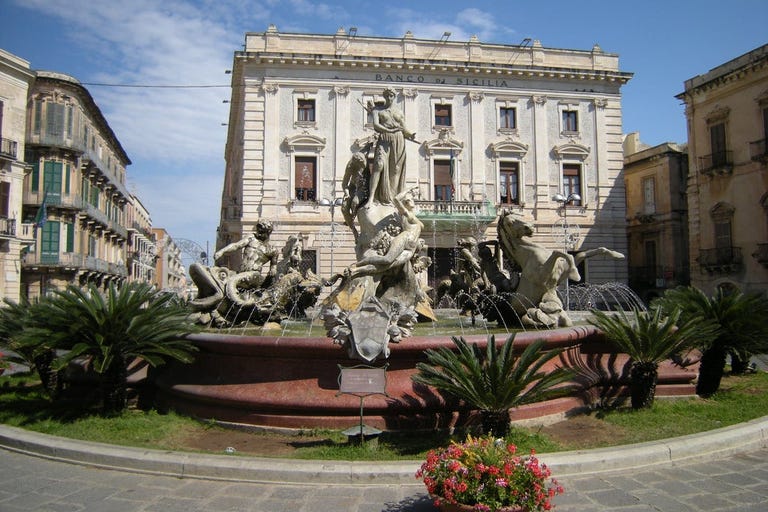
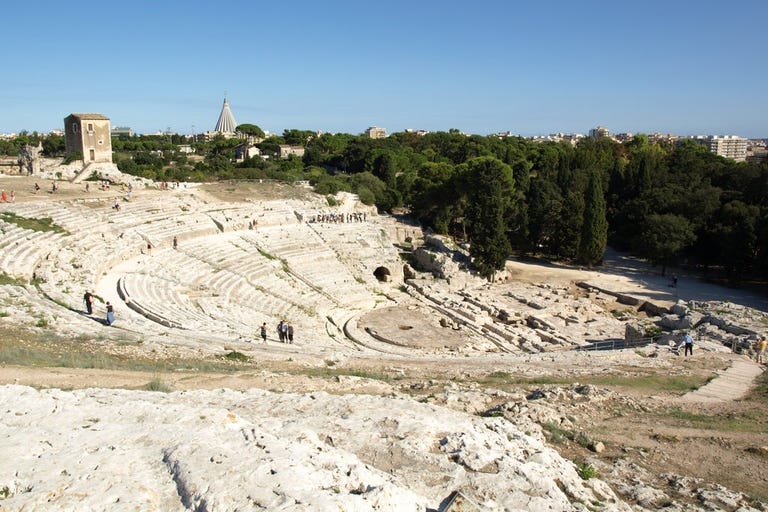
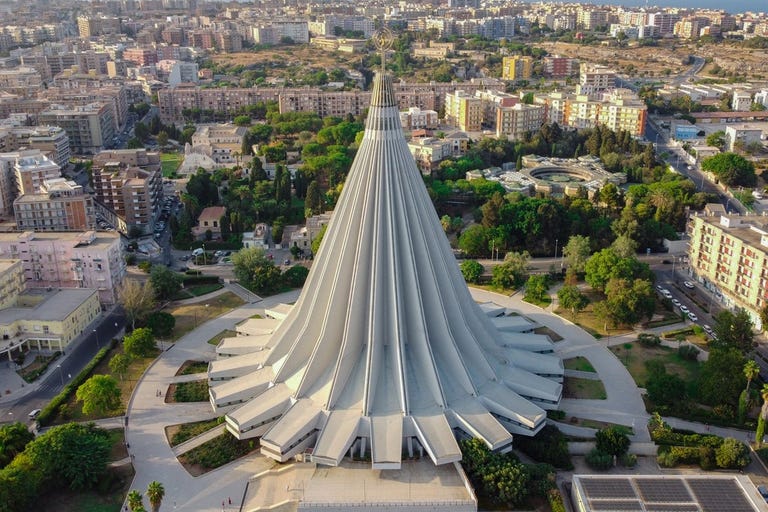
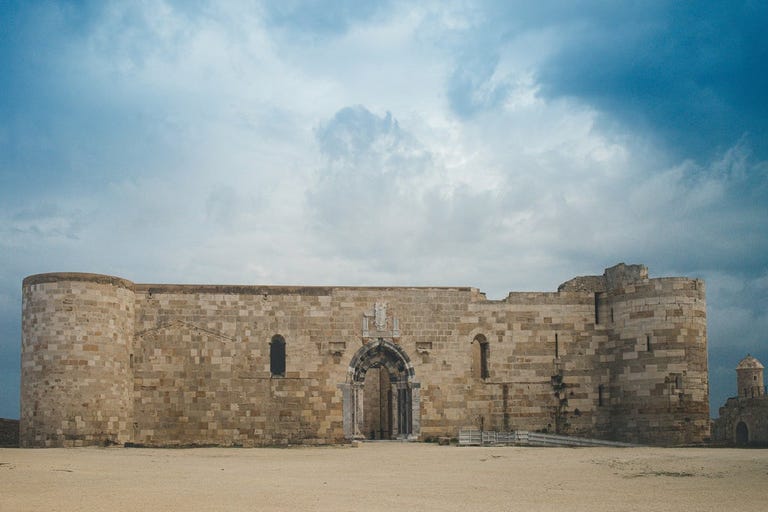
Inspiration
Travel Information
Best time to visit
The ideal times to visit Syracuse are from April to May and from mid-September to mid-October, when the climate is pleasantly warm without the intense heat of the summer months. There can be occasional rainy days, but it's perfect for exploring Sicily. For beach lovers, Sicily is a popular destination during the high season from July to August. However, it can be particularly hot and humid from the end of July to the end of August.
How to get to Syracuse
By Plane
The nearest major airport to Syracuse is Catania-Fontanarossa Airport (CTA), located approximately 60 km north of the city. From the airport, you can reach Syracuse by Interbus in 70min (stop Corso Gelone), train, or car.
By Train
It's not practical to reach Syracuse from mainland Italy. However, you can arrive in Catania by plane and then travel by train (or bus) in the Southeast of Sicily. The city's main train station is a 10-15 minutes walk from the city area, where many like to stay, and 20-30 minutes if you stay in Ortigia, the old city centre. There are trains from Catania Centrale, Noto, Modica, Ragusa and even Taormina.
However, many say that traveling by bus is actually better in Sicily.
By Car
You can reach Syracuse via the A18 motorway from Catania and the A19 from Palermo. On the island of Ortigia, there are ZTLs (restricted traffic zones), so you should park your car outside of them. If your hotel is in the old town, check in advance with the hotel on how to get there - the hotel will probably need to register your license plate for you.
If you are here for a day trip, there is a good parking area in the north of the island (map).
Fancy a roadtrip?
Be inspired by our hand-picked road trips.

Regional Specialities
Regional Wine
In terms of wine, Nero d'Avola stands as the unrivaled monarch, a beloved Sicilian grape that has thrived in Syracuse for centuries. Also don't miss out on a glass of Etna Rosso, a distinguished wine produced on the slopes of Mount Etna. If you prefer white wine, savour a glass of the aromatic and gently sweet Moscato di Noto or the sweet, floral notes of Passito, both crafted from grapes nurtured in the vineyards surrounding Noto.
If you love wine, go on a wine-tasting tour or explore the wineries along the Strada del Val di Noto at your leisure.
What to Eat
In our Catania City Guide you'll find a more extensive section dedicated to the traditional dishes of Southeast Sicily. Here are the most important dishes for Syracuse:
Antipasti
From the nearby Iblei Mountains, you have a rich selection of local cheeses: let yourself be tempted by ricotta, primosale, provola, sharp pecorino, and caciocavallo.
You will also find here the DOP-certified Ragusano from nearby Ragusa.
The sweet Pachino cherry tomatoes and the cherished olive oil from Tonda Iblea olives are also Syracuse cuisine staples.
Typical dishes in Syracuse
- Spaghetti alla Siracusana, also known as Siracusan fried pasta, is a traditional dish with fried anchovies, garlic, olive oil, and toasted breadcrumbs
- Cavatelli: A short pasta cut in the middle to better hold the sauce, often served with a variety of Sicilian sauces
- Pasta with Moorish Sauce: This unusual pasta dish is made with tuna roe, cinnamon, orange juice, and lemon
- Bobbia: A variant of the famous Sicilian caponata, features carob mushrooms found in the region
History
Founded around 734 BCE by Greek Corinthians colonists, Syracuse swiftly rose to prominence, surpassing other city-states in power and culture. The city's early years were marked by conflicts and power shifts, notably the capture of Syracuse by Gelon in the 5th century BCE, which propelled the city into a period of unmatched prosperity and military might. Most notable is his defeat of the Carthaginians at Himera in 480 BCE. This era solidified Syracuse's supremacy in the region. Moreover, during the Peloponnesian War, Syracuse not only survived the dramatic siege by Athens (415–413), but also was responsible for the destruction of the Athenian invasion force in Sicily. Thus, Syracusans weakend Athenian power in Greece itself.
In the Middle Ages, Syracuse saw varied rulers from the Byzantines to the Arabs and Normans, each leaving a distinct mark on the city's cultural and architectural landscape. The Arab rule introduced advanced irrigation and agriculture techniques, enhancing the island's prosperity. Under Norman governance, Syracuse enjoyed architectural developments. Especially churches and palaces blended Norman and Arab influences, reflecting the cosmopolitan nature of its society.
During World War II, Syracuse was a crucial point of interest due to its strategic location. Allied forces targeted the city during Operation Husky, the campaign to liberate Sicily from Axis powers in 1943. The successful capture of Syracuse was vital for securing the rest of the island, marking an important step in the Allied invasion of Italy. You can find more information on Syracuse' history on Britannica.



